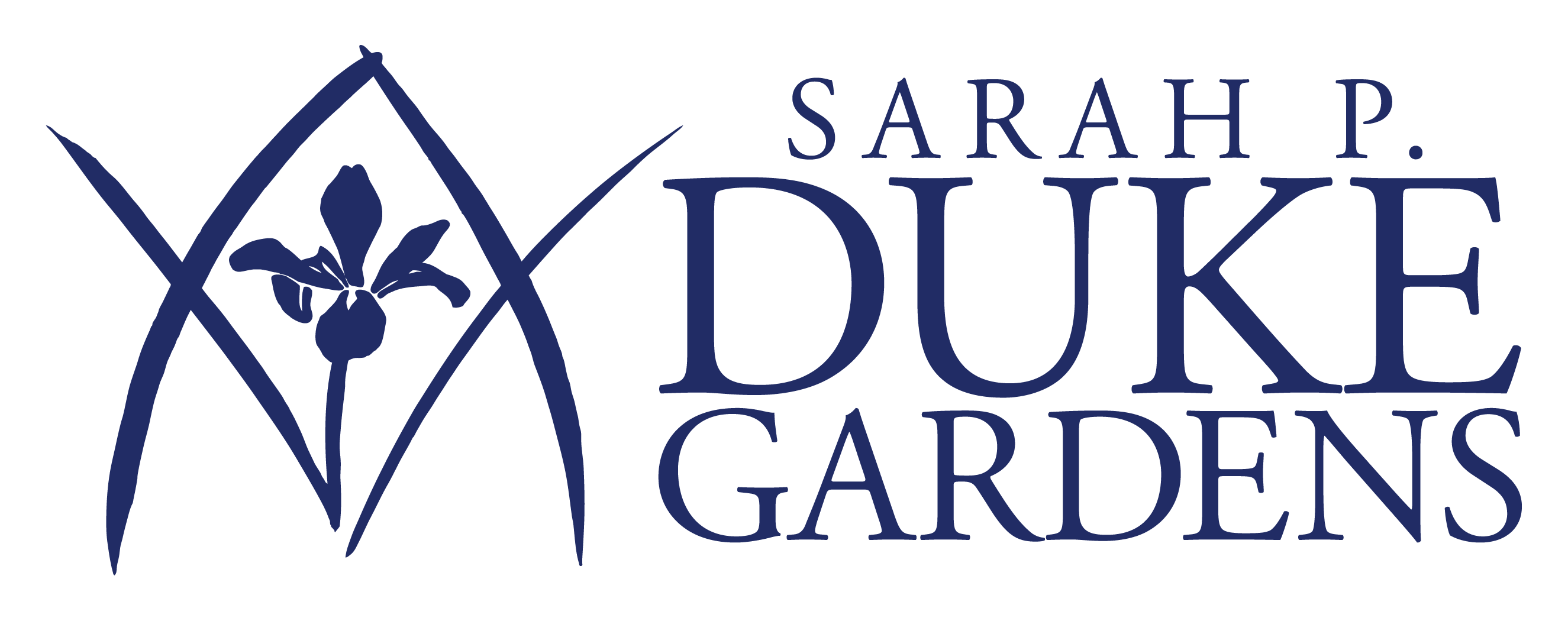The Piedmont Prairie in the Blomquist Garden of Native Plants is a horticultural interpretation of a grassland ecosystem that once covered a substantial part of the U.S. southeastern Piedmont region.
Dominated by grasses and wildflowers, with widely scattered oaks, this highly diverse ecosystem that covered approximately 80,000 square miles would have supported, among myriad other species, large herbivores such as elks and bison. The Piedmont Prairie gives visitors the opportunity to view and connect with this vanishing ecosystem.
Piedmont Prairie Highlights

Piedmont Prairie Ecosystems
The term piedmont prairie describes the grassland ecosystem that once covered a substantial part of the rolling landscape of the Piedmont (French for foothills) that stretches from New Jersey to central Alabama, covering an area of approximately 80,000 square miles. Learn More >
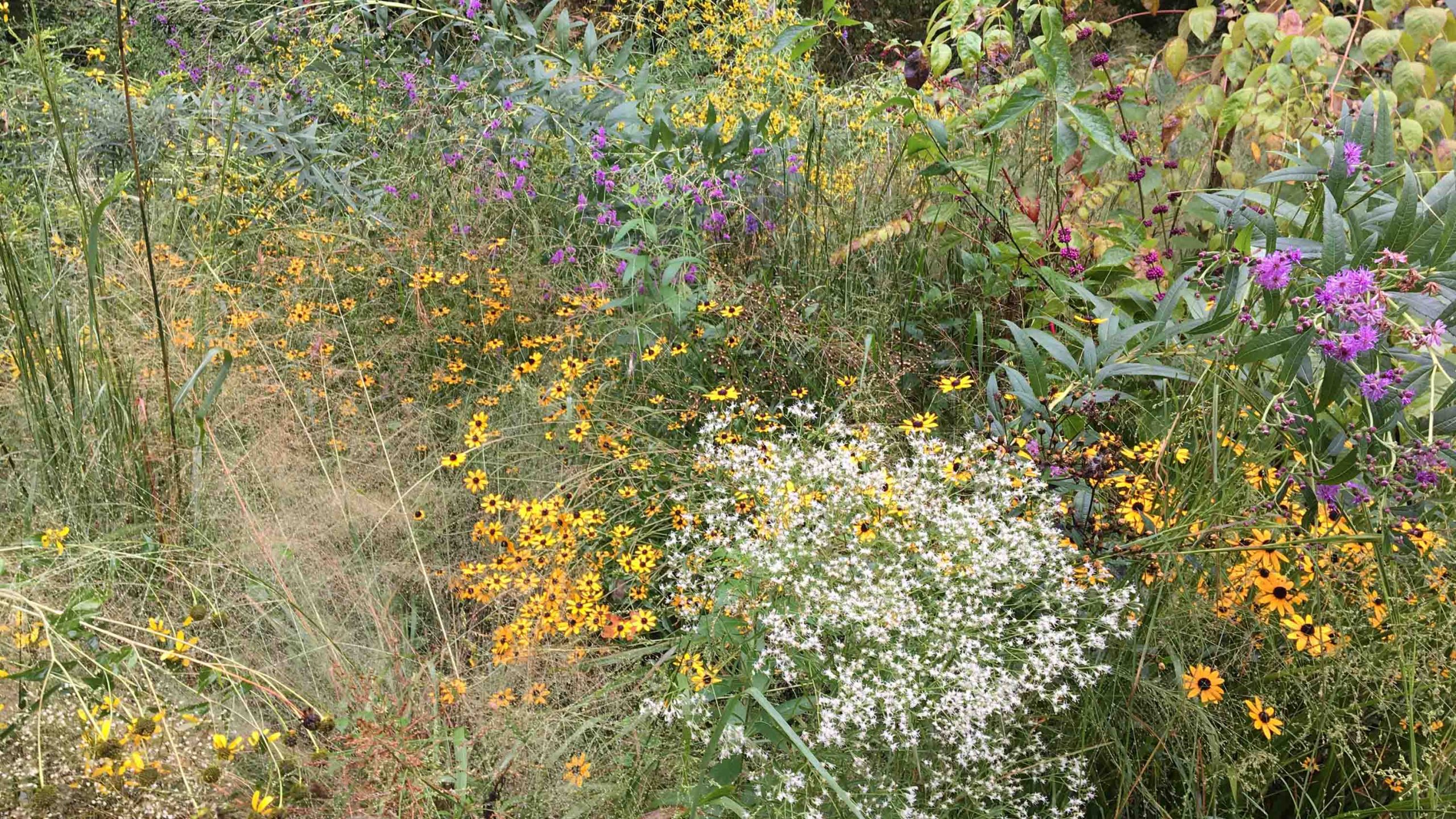
Plants in the Prairie
See a list plants considered linked to grassland ecosystems in the piedmont. The plants on display in the Blomquist Prairie were propagated from local ecotype seed. Learn More >
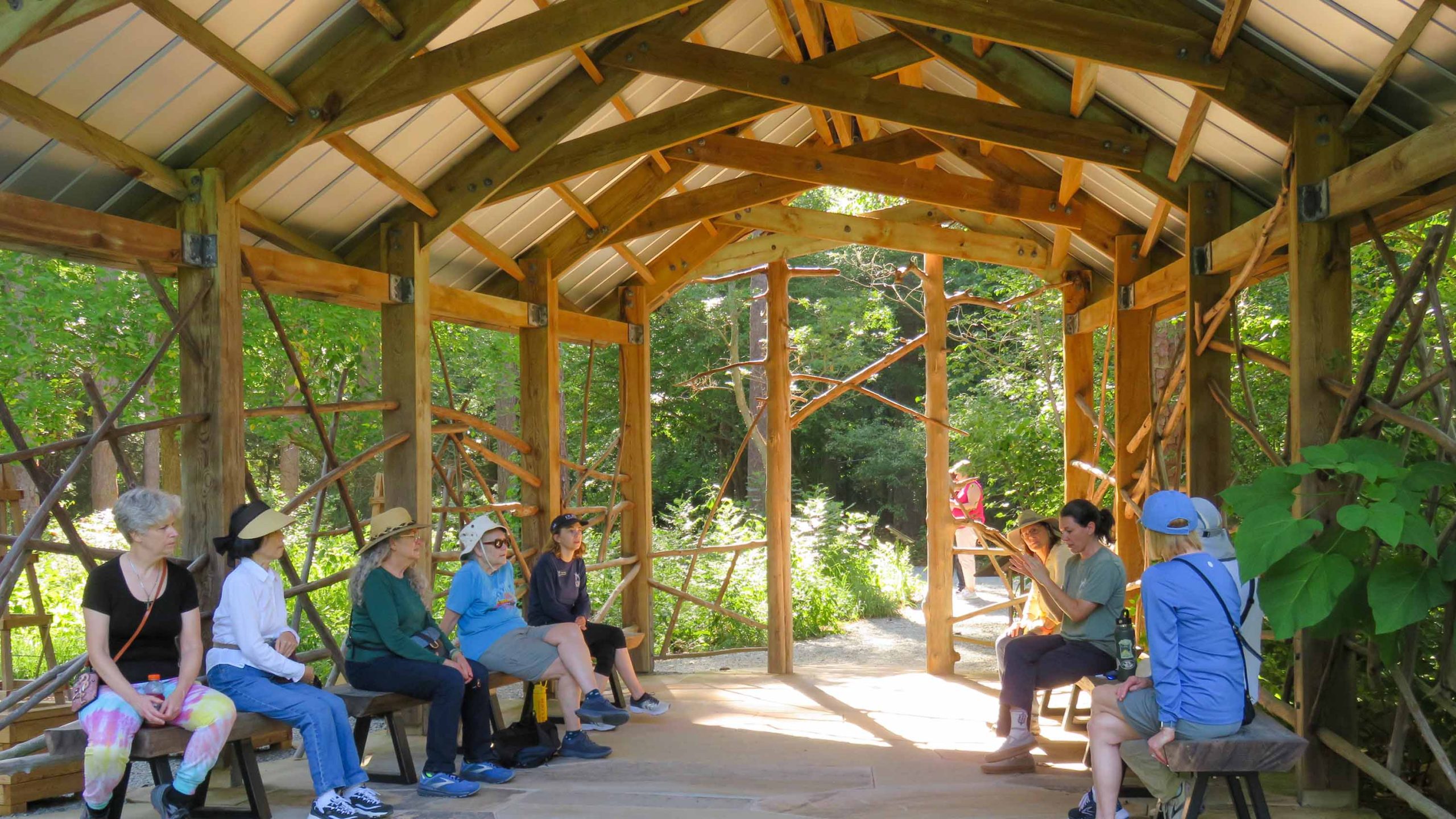
Outdoor Classroom
Designed by Ellen Cassilly Architect, Inc., the outdoor classroom in the Piedmont Prairie is responsive to the land, reflective of its purpose as a space for learning and engages garden visitors. It is largely constructed with pine from trees that were removed to create the prairie landscape.
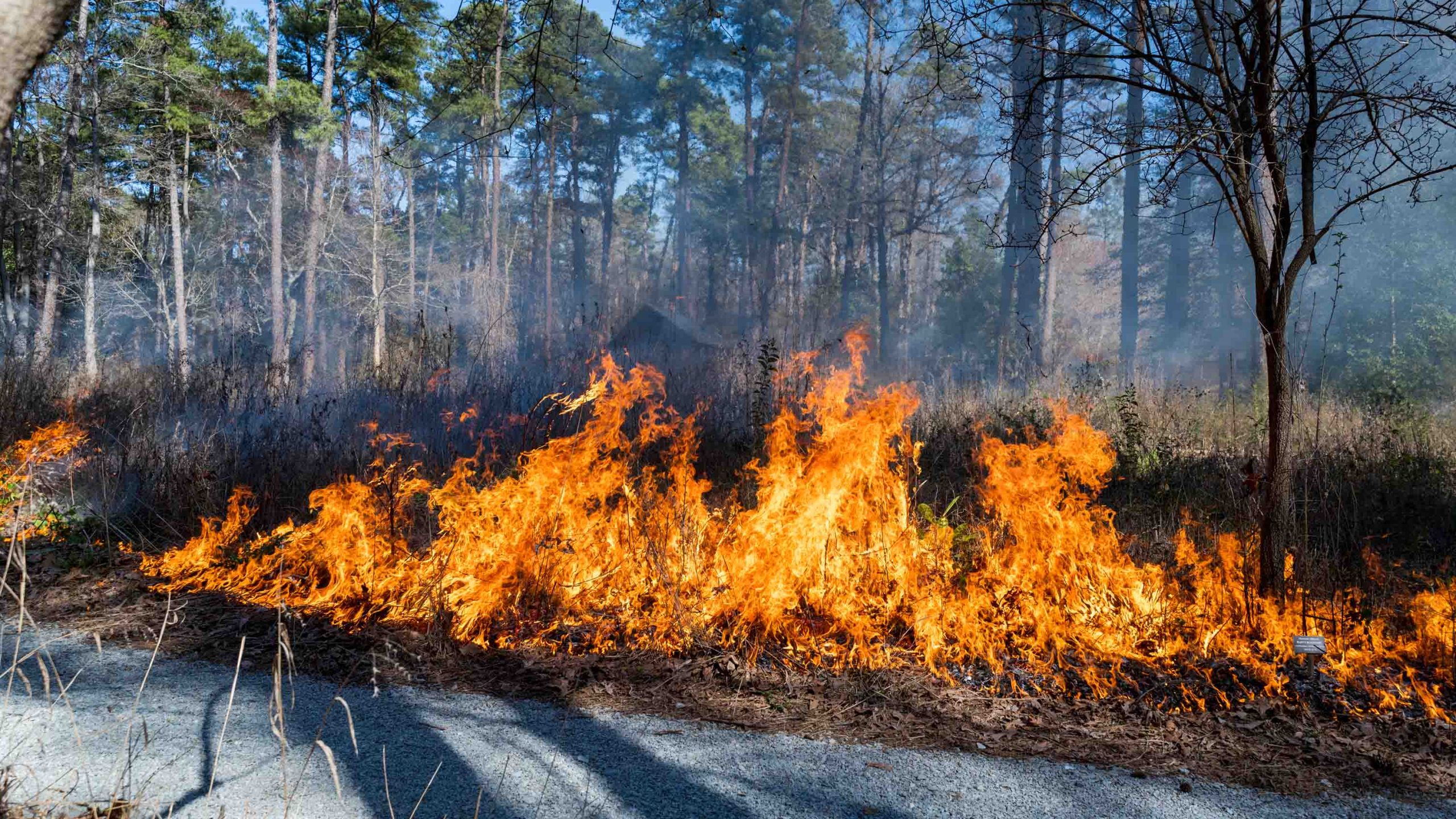
Controlled Burn
Fire is a necessary part of maintaining the ecological health of the prairie. In 2018 and 2024, the N.C. Forest Service conducted controlled burns in the Piedmont Prairie, during which the Blomquist was closed to the public. Learn More >
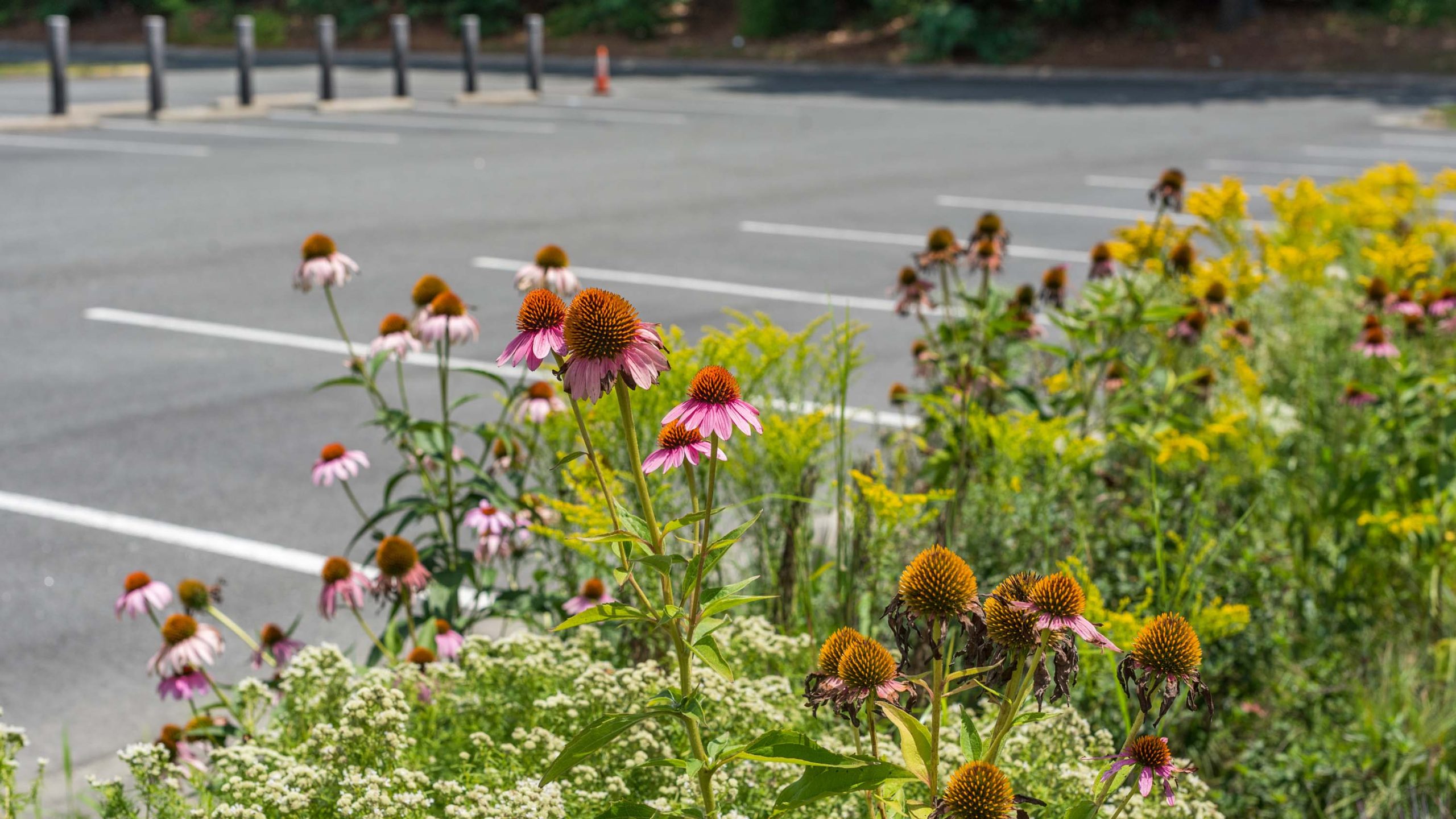
H Lot Pocket Prairie
The staff of the Blomquist Garden of Native Plants at Duke created a pocket prairie in the Duke University Medical Center H Lot parking lot to demonstrate that Southeastern native prairie plants can be an attractive, low maintenance alternative to sod in underutilized urban areas such as parking lots. Additionally, unlike sod, these pocket prairies can also be beneficial to pollinators such a birds and butterflies. Learn More >

Prairie Partnerships
Duke Gardens’ efforts to promote prairie landscapes is having an impact in the Research Triangle Park. The biotech firm Syngenta asked the Blomquist staff to help them design a small prairie on their Davis Drive campus. Using our protocols and seeds collected from our prairie, as well as design themes developed through direct consultation with the Blomquist team, a group of Syngenta employees raised plants to install in their own prairie. Our hope is that other businesses will be inspired to plant prairies, giving strength to a vulnerable ecosystem.

Downtown Pocket Prairie
A redesigned Rotary Memorial Park features a pocket Piedmont prairie in the heart of downtown Durham. Learn More >
Pollinators need native plants and native plants need pollinators. Learn how Duke Gardens is supporting both.
Learn More ›
Questions about the Piedmont Prairie?
Please contact us at gardens@duke.edu.
